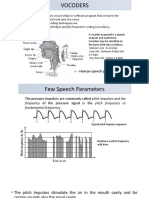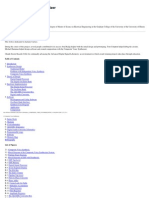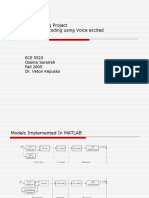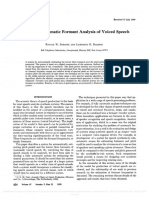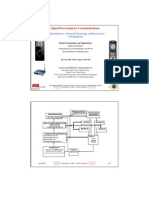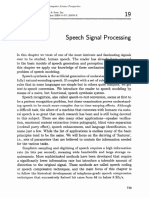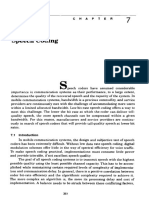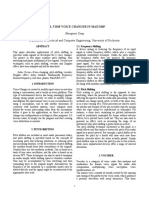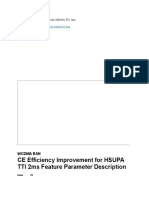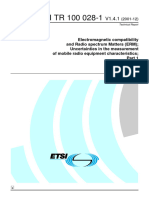0% found this document useful (0 votes)
451 views4 pagesChannel Vocoder Explained
The channel vocoder was invented by Dudley and incorporates a speech model into its analysis and synthesis. It analyzes speech signals using a bank of bandpass filters to extract amplitude information for each frequency channel, and also determines the excitation mode (voiced or unvoiced) and fundamental frequency. For synthesis, it uses the channel amplitude signals to control the contribution of each frequency band, while the excitation signals determine the periodic or random nature of the output within each band, producing the final synthesized speech signal.
Uploaded by
Srijith VijayCopyright
© Attribution Non-Commercial (BY-NC)
We take content rights seriously. If you suspect this is your content, claim it here.
Available Formats
Download as DOC, PDF, TXT or read online on Scribd
0% found this document useful (0 votes)
451 views4 pagesChannel Vocoder Explained
The channel vocoder was invented by Dudley and incorporates a speech model into its analysis and synthesis. It analyzes speech signals using a bank of bandpass filters to extract amplitude information for each frequency channel, and also determines the excitation mode (voiced or unvoiced) and fundamental frequency. For synthesis, it uses the channel amplitude signals to control the contribution of each frequency band, while the excitation signals determine the periodic or random nature of the output within each band, producing the final synthesized speech signal.
Uploaded by
Srijith VijayCopyright
© Attribution Non-Commercial (BY-NC)
We take content rights seriously. If you suspect this is your content, claim it here.
Available Formats
Download as DOC, PDF, TXT or read online on Scribd
/ 4





